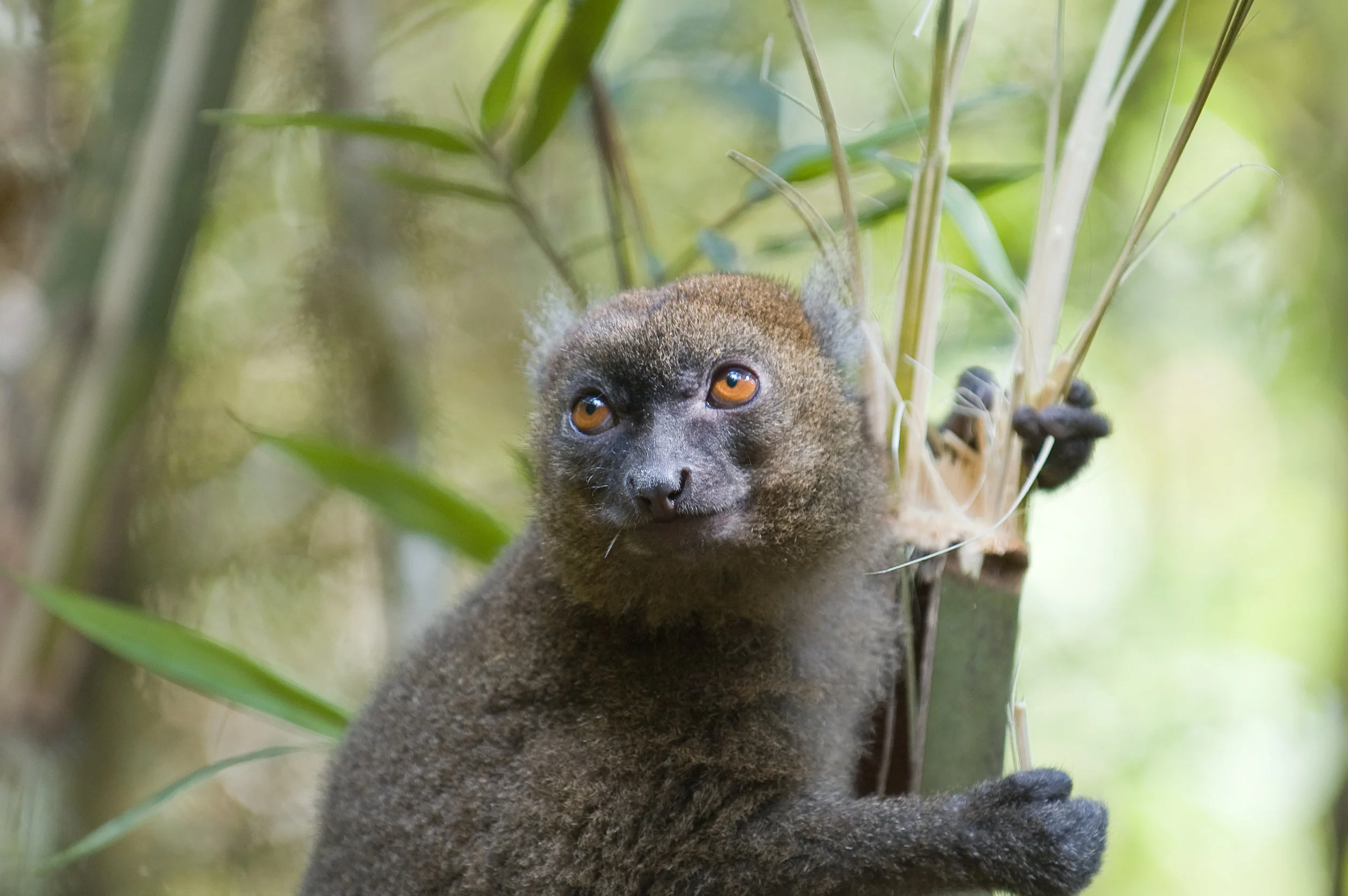Greater Bamboo Lemur
"Lemur Study" by John Park (Digital)
“The bamboo lemur is such an interesting creature. Their ability to effortlessly jump from tree branch to branch is what captured my attention to these brilliant creatures. I specifically chose a photograph to do a portrait study of the Bamboo Lemur. The lighting/environment captured such an isolated moment, when these creatures are commonly seen in very social / family orientated groups. I wanted to depict the image in a much more painterly fashion, focusing all the details and brushstrokes into the face.”
Your purchase is helping Expedition Art and Saving Species purchase land in Sumatra! Learn more about the project.
Habitat
The greater bamboo lemur, like all lemur species, is found only on the island of Madagascar. While they used to be found in pockets in most parts of the island, their populations are now seemingly restricted to rainforests close to the coast on the southeastern part of the island. Greater bamboo lemurs are associated with the Ranomafana National Park of southeastern Madagascar; as their name suggests, they live in areas with abundant quantities of their preferred food: bamboo.
Family Life
The greater bamboo lemur is an enigmatic creature. There is an assumption that small groups of bamboo lemurs live together, usually close to half a dozen but on occasion as many as 12. One offspring is born per gestational period and is weaned after 8 months. Bamboo lemurs use vocalization to communicate with one another and have two distinctive calls: contact and alarm.
Lifespan
Bamboo Lemurs can live up to 17 years in captivity.
Population
The population is currently estimated at less than 250 individuals.
Fun Fact
There are several different species of bamboo lemur; the greater bamboo lemur is the largest. Young bamboo lemurs like to suck their thumbs. They have the smallest population out of all other lemurs.
Why are they endangered?
The extensive cutting of bamboo and the slash-and-burn techniques of the Madagascar rainforests are some of the major threats to these creatures. Hunting in some regions, habitat destruction, disturbance and fragmentation all threaten wild populations. In addition, lemur groups living in lowland areas have been found to have high parasite burdens, which can negatively affect health and life expectancy.
Status
Critically Endangered


